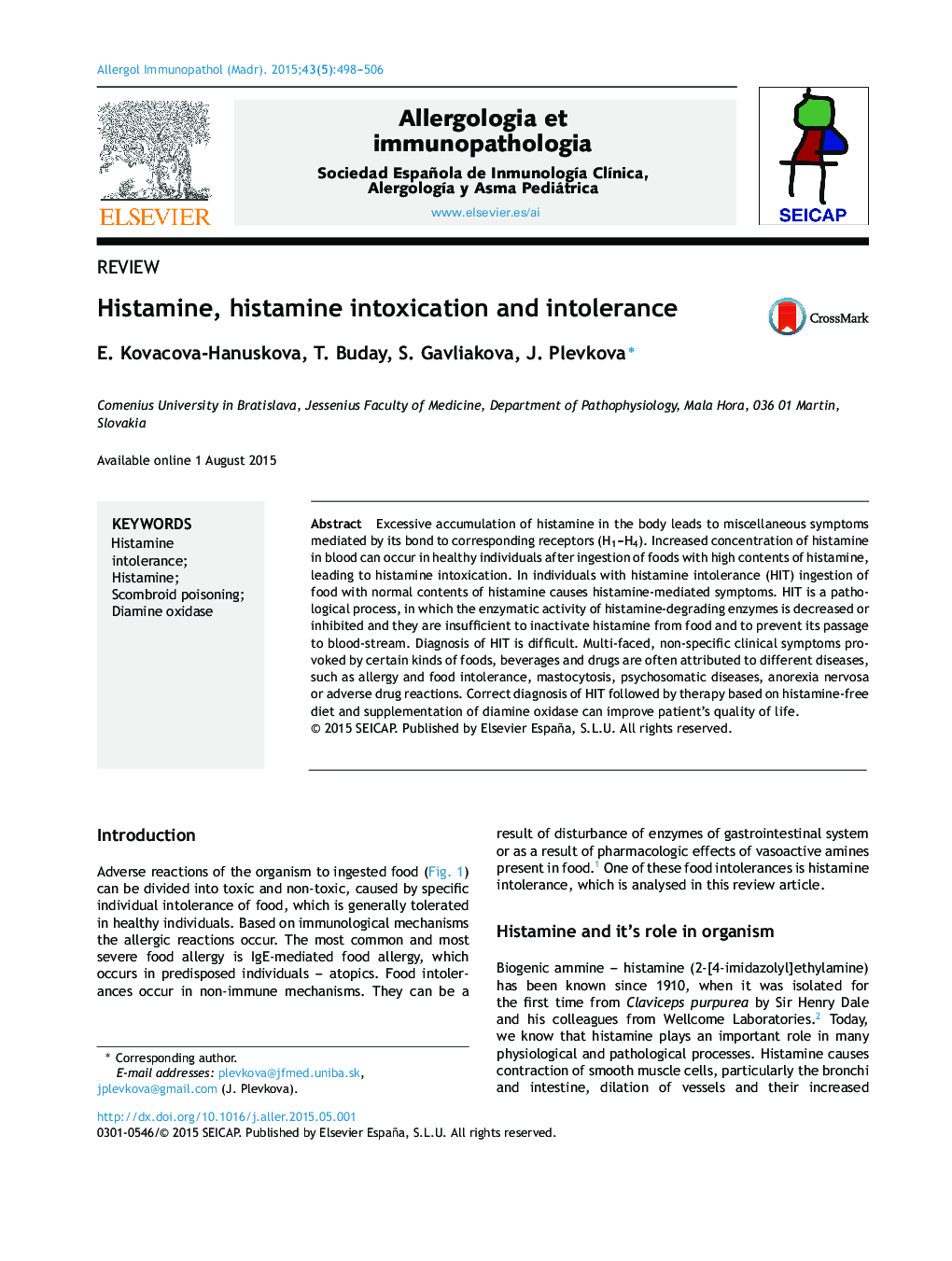| Article ID | Journal | Published Year | Pages | File Type |
|---|---|---|---|---|
| 3339558 | Allergologia et Immunopathologia | 2015 | 9 Pages |
Excessive accumulation of histamine in the body leads to miscellaneous symptoms mediated by its bond to corresponding receptors (H1–H4). Increased concentration of histamine in blood can occur in healthy individuals after ingestion of foods with high contents of histamine, leading to histamine intoxication. In individuals with histamine intolerance (HIT) ingestion of food with normal contents of histamine causes histamine-mediated symptoms. HIT is a pathological process, in which the enzymatic activity of histamine-degrading enzymes is decreased or inhibited and they are insufficient to inactivate histamine from food and to prevent its passage to blood-stream. Diagnosis of HIT is difficult. Multi-faced, non-specific clinical symptoms provoked by certain kinds of foods, beverages and drugs are often attributed to different diseases, such as allergy and food intolerance, mastocytosis, psychosomatic diseases, anorexia nervosa or adverse drug reactions. Correct diagnosis of HIT followed by therapy based on histamine-free diet and supplementation of diamine oxidase can improve patient's quality of life.
